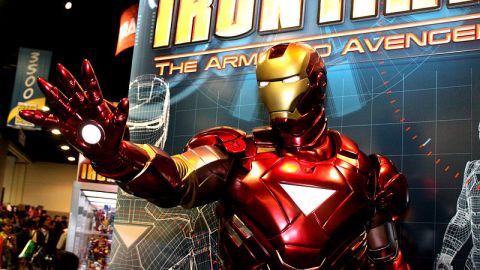The Country With the Best Sci-Fi Flicks Wins

Billionaire entrepreneur Elon Musk – recently named by TED’s Chris Anderson as one of the most innovative thinkers in the world today – is at it again, this time with a plan to create a holographic user interface for creating rocket parts for his Space X company. This user interface, of course, is based on the technology in Hollywood’s “Iron Man” films. And, earlier this month, Musk finally unveiled plans for his much-hyped Hyperloop, a futuristic transportation system based on ideas conceived by earlier science fiction films.
There now seems to be an ongoing race to create the coolest gadgets from our science fiction films, everything from the medical tricorder to the Dick Tracey smart watch to futuristic jet packs. And don’t forget that people like Elon Musk and Jeff Bezos are also working on side projects to send people into outer space and colonize the surface of Mars — ideas that wouldn’t be possible without a thriving science fiction imagination in our country.
So what’s going on here?
It may be the case that we need a new metric for measuring the innovation potential of countries. The de facto standard for measuring innovation involves patents and R&D spending levels. The more patents, the better. As a result, when organizations like the World Economic Forum create a report on national competitiveness, the main metrics they use to measure innovation involve R&D spending and patents per capital. It’s easy to see why patents have always been used as an indicator of innovation – they’re easy to measure. And, in the days when innovation took place in massive R&D labs, they were tough to crank out unless you had huge teams of well-funded scientists and researchers.
That’s all changed, though, now that innovation is going both open-source and crowd-funded. Now, any billionaire with a cool idea can open-source his or her technology to the world (as Elon Musk did with his Hyperloop plans), and any bootstrapped entrepreneur can create a sci-fi product simply by reaching out to the crowd for financing (as people are doing with products like 3D printers and smart watches on Kickstarter).
As a result, maybe a better metric would involve a nation’s ability to produce the best science fiction films. In this regard, the U.S. would appear to be the clear leader – with its relentless blockbuster haul every summer of everything from superhero flicks to outer space blockbusters like “Star Trek.” True, some of these films are awful dreck, but as we saw with “Iron Man,” sometimes they can lead to some truly breakthrough ideas.
The Twitter exchange between Elon Musk and “Iron Man” director Jon Favreau is priceless. After Musk tweets that he’s looking to create a specific type of holographic user interface for making rocket parts, Favreau responds, “Like in Iron Man?” To which Musk answers, “Yup. We saw it in the movie and made it real.”
If it’s just a matter of cranking out blockbuster sci-fi hits, we can expect the rest of the world to catch up soon. In emerging markets like China, Russia and South Korea, we are already starting to catch glimpses of what science fiction-inspired creativity can lead to. Russia, which hadn’t had a global sci-fi hit since the days of Andrei Tarkovsky’s “Solaris” and “Stalker,” suddenly started to crank out films like Timur Bekmambetov’s “Night Watch” once its economy started humming again and innovators no longer feared the long arm of the government. Now you have the likes of Brad Pitt (“World War Z”) and Angelina Jolie (“Salt”) headed to Moscow to do sci-fi flicks. That has to be inspiring for the next wave of Russian innovators. (“We get to make a gadget like the one the zombies used!”) So keep your eyes on the BRICS – not so much on the number of patents they crank out each year, but on the activity of their domestic film industries.
Maybe the Hollywood-industrial complex, in which ideas from Hollywood films feed into new innovation R&D in Silicon Valley and other tech hubs around the nation, is not such a bad thing after all. As long as they continue to bring us innovations like smart watches, tricorders, jet packs, Hyperloops and Iron Man gizmos, most of us are probably more than willing to sit through the latest sequel to a colossally over-financed movie film franchise.
image: Iron Man / Wikimedia Commons





